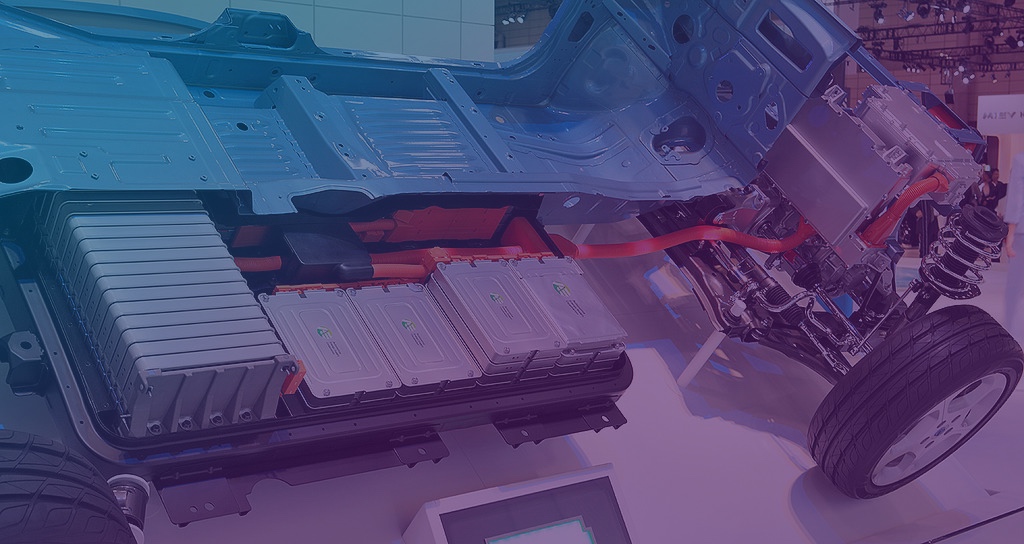The lithium-ion battery is the driving force behind the rise in electric vehicles. Lithium, the lightest metal, is now being labeled “white gold” due to spiking demand. The battery was first commercialized in the 1990’s but now find its place in history as the technology that can help us decarbonize transportation.
History
The history of the lithium-ion battery, spans three continents, an oil crisis, and a Nobel Prize. Inventors, including Thomas Edison, had been working on large batteries for EVs since the late 1800’s. However, in midst of the 1970’s oil crisis, Stanley Whittingham, at what is now Exxon Mobil, created the first lithium-ion battery. But the project was halted. Then, John B Goodenough improved on Whittingham’s battery by creating a cathode, the negative side of the battery cell, of lithium cobalt oxide while working at Oxford University. Finally, the technology found its way to Japan, where Akira Yoshino used graphite in the anode, the positive side of the battery cell. Each of their advancements made the lithium-ion battery safe for use in technologies and together they won the Nobel Prize in 2019. Today, the lithium-ion battery is synonymous with EVs, but the battery was first used by Sony for their handheld camera in the early 90’s. Now, the battery can be found in phones, laptops, vehicles, and energy storage systems.
Why Lithium?
Lithium is light and dense. It is the third lightest element on the periodic table and the lightest metal. However, it has a high energy density, allowing it to hold a significant amount of energy. Lithium-ion batteries can be utilized for a significant period of time without having to be recharged. These two characteristics means that it is light enough to be in your iPhone but can provide energy enough for a road trip. It is important to note that the lithium found in the battery is a chemical, in the form of lithium carbonate or lithium hydroxide produced through refining.
Different versions of lithium-ion batteries?
Li-ion batteries are named by their cathode and the two most popular versions for EVs are nickel-manganese-cobalt (NMC) and lithium-iron-phosphate (LFP). Both rely on graphite in the anode. Each version has advantages and disadvantages.
NMC batteries have a higher energy density than LFP batteries, leading to a longer driving range. EVs with NMC batteries can have a range of over 300 miles. However, NMC batteries rely on nickel and cobalt. Both have supply constraints and cobalt mining faces accusations of human rights concerns from artisanal mining with the largest reserves being in the Democratic Republic of the Congo. LFP batteries have a longer cycle life, meaning that it can be charged and discharged more often before the battery needs to be replaced. LFP is also considered safer and less likely to catch on fire.
Drawbacks of Lithium-ion Batteries
Lithium-ion batteries have drawbacks at the technical, mining, and geopolitical level. Despite these drawbacks, lithium-ion batteries will be the prevailing battery technology for the foreseeable future. At the technical level, the batteries can overheat, be damaged at higher voltages and potentially catch on fire. There have been several insistences of fires caused by damaged batteries on e-bikes. Lithium-ion batteries that are well protected and designed are not likely to catch on fire.
All of the key metals in the battery, from lithium to nickel and cobalt, need to be mined. Lithium is mined through hard rock mining or evaporation ponds at brine deposits. Mining can lead to biodiversity and water issues along with problems with local communities and indigenous populations. Above all, mining takes time. The permitting and development process can take over a decade and rising lithium demand could cause a severe supply deficit in the 2030s if more mines do not become operational.
Finally, battery metals are at the heart of geopolitical tensions. China and Chinese companies currently control a chokepoint in the mining or processing of several of the key battery minerals after investing in the battery supply chain before other countries during the past two decades. Mining and geopolitical tensions are a key reason companies are searching for alternatives.
Alternatives to Lithium-ion Batteries
Sodium-ion batteries can be a “pressure release valve” for lithium supply constraints by supplementing the market rather than overtaking lithium-ion batteries. Sodium is abundant and less expensive. Since it is found all over the world, it is less likely to lead to geopolitical risks. However, sodium has a lower energy density than lithium. This means the battery would need to be larger and heavier to go the same distances. This will limit sodium-ion batteries’ potential in markets like the United States where range anxiety is an issue. However, they will be used in urban areas and with two and three wheelers.
Sodium will also be an alternative to lithium-ion batteries on energy storage systems. Weight is not an issue for standing storage systems and the batteries can help support the electricity grid during periods of intermittency along with iron-air batteries and pumped hydro.


